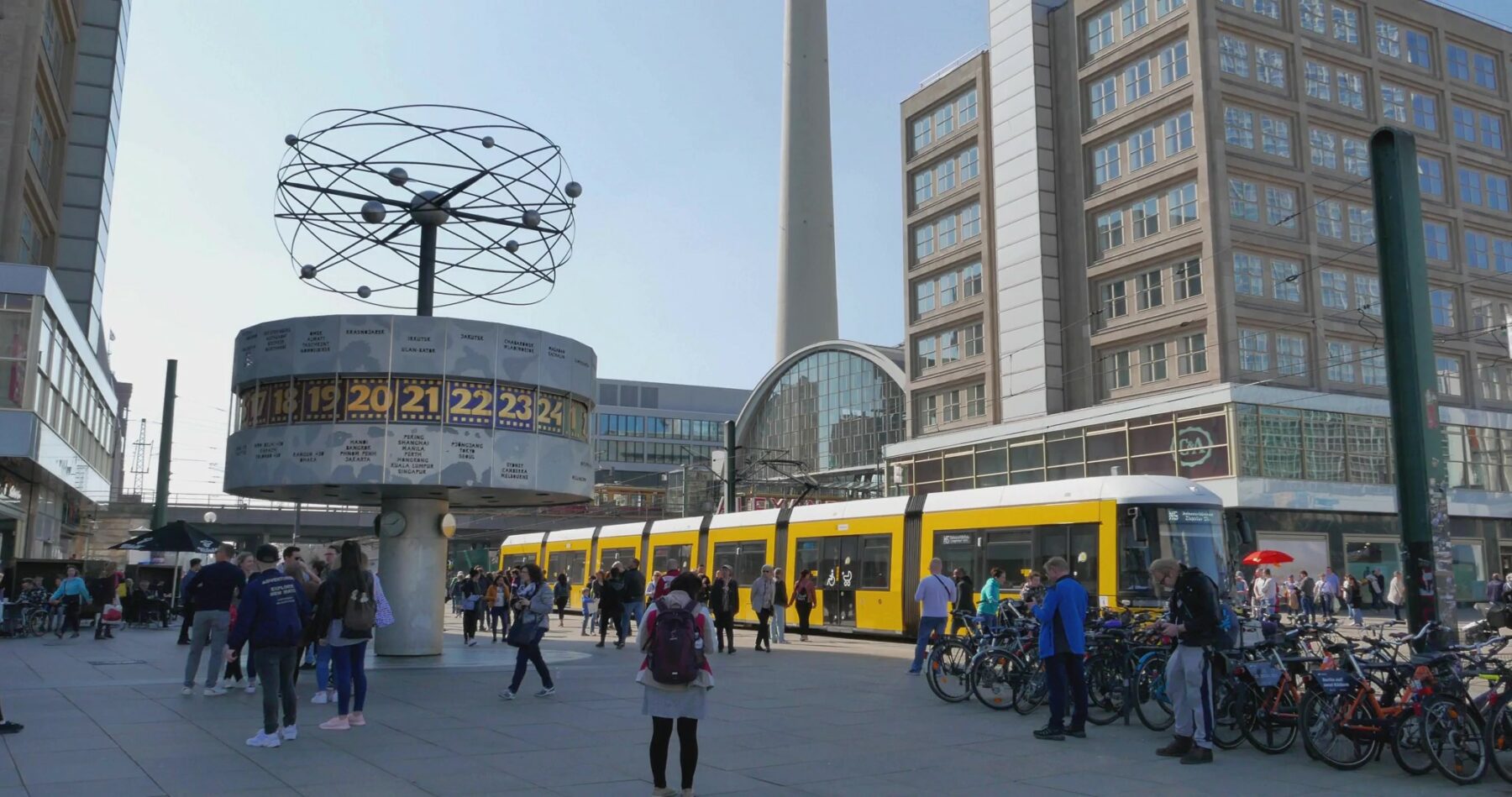Smart cities, low emissions: the future of urban planning with AI and big data
A blog by Professor Felix Creutzig
How might cities of the future benefit from AI and big data?
Urban sustainability and decarbonisation are at the forefront of Bennett Institute’s Professor Felix Creutzig’s research efforts aimed at mitigating climate change. Two recent studies, “Urban Fabric Decoded: High-Precision Building Material Identification via Deep Learning and Remote Sensing” by Sun, Creutzig et al, and “Built Environment and Travel: Tackling Non-Linear Residential Self-Selection with Double Machine Learning” by Nachtigall, Creutzig et al, present cutting-edge methodologies that redefine our understanding of cities and their impact on carbon emissions.
What are the new AI and big data studies focused on?
While one focuses on the material composition of urban structures, the other dissects the causal relationship between city design and mobility-related CO₂ emissions. Together, these studies demonstrate how artificial intelligence and advanced modelling techniques can enhance urban planning strategies for a sustainable future.
Can you tell us more about mapping urban building materials?
A study by Kun Sun et al pioneers a deep-learning-driven approach to mapping urban building materials with high precision. Using convolutional neural networks trained on remote sensing and Google Street View imagery, the research team successfully classified roof and façade materials across multiple Danish cities. Material identification at this scale has been a longstanding challenge, given the complexity of urban environments and the limitations of previous methods reliant on manual surveys.
What does this work tell us about urban sustainability?
The study achieves a breakthrough by automating the process with neural networks, achieving accuracy levels that make large-scale material mapping feasible. The implications are profound: detailed knowledge of building materials is essential for urban sustainability, influencing retrofitting strategies, circular economy planning, and carbon accounting. By integrating machine learning with satellite and street-level imagery, the study provides a replicable framework that can be deployed globally, offering policymakers the data needed to optimise material reuse and reduce embodied carbon in the built environment.
How does urban form impact emissions?
A second study by Florian Nachtigall et al tackles an equally complex but conceptually distinct problem: the relationship between urban form and mobility emissions. A persistent challenge in urban transport research is residential self-selection—the tendency of individuals to choose neighbourhoods based on pre-existing travel preferences. Most previous studies assumed a linear relationship between urban design and mobility behaviour, potentially overestimating the impact of urban density on travel-related CO₂ emissions. By employing Double Machine Learning (DML), we introduce a more sophisticated approach that accounts for non-linearities in self-selection, correcting for biases that have distorted previous estimations. Our analysis, based on travel data from over 32,000 Berlin residents, reveals that ignoring these non-linear effects inflates the estimated impact of the built environment by 13%–18%.
How does this study help urban planners?
We show that mixed-use, transit-accessible urban neighbourhoods can reduce travel-related CO₂ emissions by 26%, while exurban development increases them by 35%. The dominant driver is destination accessibility—proximity to jobs and services—which accounts for around 63% of the total built environment effect on emissions. These insights provide a concrete foundation for urban planners: prioritising development in transit-rich, high-density areas can significantly cut transport emissions, while unchecked suburban expansion risks locking in car dependency for decades. Applying their model to 64,000 planned housing units in Berlin, we estimate that emissions could be cut by 43 percentage points if the new housing were concentrated in well-connected urban areas.
Why is this work important to help us plan the smart sustainable cities of the future?
Together, these studies illustrate how artificial intelligence and machine learning are transforming our ability to measure and model urban environments. The first offers a precise method to assess the physical composition of cities, enabling more sustainable material flows and carbon accounting. The second refines our understanding of how cities shape mobility emissions, eliminating methodological biases that have long plagued transport studies. Their convergence highlights a critical shift in urban research: the transition from broad estimations to precise, data-driven insights that can directly inform policy. “Our AI applications have low compute requirements but are highly policy relevant, meeting a sweet spot in the use of AI technology”. As cities worldwide grapple with the dual crises of climate change and urban expansion, these studies provide the analytical tools needed to design low-carbon, resource-efficient urban futures.
What are the next steps in taking this work forward?
Our next steps involve investigating whether and how our results can be transferred to other cities. We aim to make our tool – artificial intelligence for urban planning – applicable for municipalities in the UK, potentially helping the New Town planning of the government.




